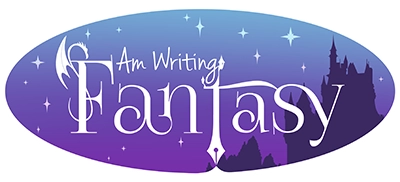Welcome to the third post on dialogue. In the last two, we’ve covered dialogue tags and how to use adverbs to accentuate those. Now we are on to action tags!
Before we get into those, let’s look at how far the examples have come:
“Where is it?” Cameron asked.
“Across Coldbrook stream. There… is a place,” Maryion said, nervously.
“That could be anywhere for miles. We’ll never find it,” Jyff swore.
“Tell me exactly where it was,” Cameron growled.
“Upstream from the Deep Water crossing,” Maryion whispered.
“She’s lying,” Jyff hissed.
“Nah, you wouldn’t do that,” Cameron said. “You know what will happen then, right?”
And number two:
“They are comin,” Harry warned
“How long do we have?” Duke Emmerin asked, flatly.
“Hour, mayhaps two,” Harry said. “Not more.”
“Get the livestock inside and close the gates in forty-five minutes,” Duke Emmerin ordered. “Anyone who doesn’t make it will have to fend for themselves.”
The Captain of the Guard said quickly, “But, sire, your daughter—”
“I know where she is,” Duke Emmerin said. “I’m the one who sent her.”
“She’n might be safer t’where she at,” Harry sighed. “T’ese walls won’t never withstand the giants.”
So far, we know who is speaking and have a bit of feeling based on the dialogue tags other than “said” and the sparingly used adverbs. But the rest of the scene such as where the characters are and what they are doing is fairly blank. Sure, I could create that in the prose before and after the dialogue, but I can also intersperse bits within the dialogue while minimizing the use of dialogue tags like “said” with action tags!
Action tags are the gold mine of dialogue.
With action tags, you can designate who is speaking while mixing in motion and description. This is taking dialogue to the pro level, so let’s get going.
When you read, any name in close association with dialogue immediately gets linked in your mind. That is how action tags work. Instead of spelling out who is speaking with a dialogue tag like said, you infer it by stating a character did something in close proximation to the dialogue.
This also means you need to be very careful where you set your paragraph breaks. If you like to have multiple people speaking in one paragraph, don’t use action tags. Actually, I’d say just stop doing that. You are driving your readers crazy, but I’ll get to that in a future post! For now, know you can’t do that with action tags. It will get too confusing too quickly. You need one person speaking per paragraph/line.
Let’s get to examples because it is the best way to demonstrate the power of action tags!
Pulling out a line from example one, let’s look at:
“Tell me exactly where it was,” Cameron growled.
Sure, “growled” indicates he is angry. But what if instead of saying (i.e., telling) that Cameron is angry or annoyed, I show it?
“Tell me exactly where it is.” Cameron grabbed the front of Marioyn’s shirt and pulled forward until they were nose to nose.
Now, what do you get from the scene? Cameron threatens Marion physically. The information is vital to him, and she is not. Do you still know it is Cameron speaking?
And that is a quick use of action tags. You can also drop in clues to where characters are, what is in the room, moods, and emotions. You can also slow down dialogue by adding in another line of description as a character’s attention is caught by something, dropping in either another clue for the reader or building secondary emotions like romance.
To illustrate, I can take this from example two:
“Get the livestock inside and close the gates in forty-five minutes,” Duke Emmerin ordered. “Anyone who doesn’t make it will have to fend for themselves.”
And turn it into:
Duke Emmerin paced to the window and gazed beyond the thick stone walls of Niworth to the fields and pastures that dotted the surrounding hills. He turned back to the two men waiting in the room. “Get the livestock inside and close the gates in forty-five minutes,” he ordered. “Anyone who doesn’t make it will have to fend for themselves.”
Now you know not only who is speaking, but where he is standing. Does his surveillance give a bit more weight to the decision he makes?
Once you get started, switching from dialogue tags to action tags becomes addictive. Characters pace. They pick up a drink and take a slow sip. They cough on a mouthful of food or laugh. They might throw in a sly smile before answering, or turn away to hide an emotion they don’t want to be seen. Characters come ALIVE with action tags in a way that enhances the dialogue while providing readers a ton of clues, all while showing and not telling.
I told you action tags are a gold mine!
If readers complained that your dialogue didn’t flow, felt stilted or unnatural, try adding in action tags. It may be what you are missing.
So what can we do with our examples besides the bit above?
“Where is it?” Cameron asked as he stopped pacing in front of Maryion.
“Across Coldbrook stream. There… is a place,” Maryion said, nervously.
“That could be anywhere for miles. We’ll never find it.” Jyff ran his fingers through his hair.
“Tell me exactly where it is.” Cameron grabbed the front of Marioyn’s shirt and pulled forward until they were nose to nose.
“Upstream from the crossing at the Deep Water crossing,” Maryion whispered as she stared at the floor.
“She’s lying,” Jyff hissed.
“Nah, you wouldn’t do that.” Cameron rested the tip of his knife against Maryion’s throat. “You know what will happen then, right?”
And number two:
“They are comin,” Harry warned before he’d even entered the Duke’s study.
“How long do we have?” Duke Emmerin asked, rising from his desk.
“Hour, mayhaps two,” Harry replied. “Not more.”
Duke Emmerin paced to the window and gazed beyond the thick stone walls of Niworth to the fields and pastures that dotted the surrounding hills. He turned back to the two men waiting in the room. “Get the livestock inside and close the gates in forty-five minutes,” he ordered. “Anyone who doesn’t make it will have to fend for themselves.” The Captain of the Guard said quickly, “But, sire, your daughter—”
“I know where she is.” Emmerin closed his eyes as he released a held breath. “I’m the one who sent her.”
“She’n might be safer t’where she at.” The old ranger placed a hand on Emmerin’s arm. “T’ese walls won’t never withstand the giants.”
So what do you think of the examples now, especially compared to post 1? Are they better? Do you get a feel for the scene, friendships, threats, and tension? Let me know in the comments!
Before you go also consider one final possibility for dialogue: No tags!
This is possible but best done when only two people are speaking and not for too many lines of dialogue. Throwing in a catch-phrase, accent, or in dialect also helps keep the two speakers clear. And I’d stick with two speakers and not more. Otherwise, things can get confusing quick.
But if you have two characters exchanging quite a few lines of dialogue and have the lines alternating, you can occasionally skip using any tags, before returning to an action or dialogue tag.
I couldn’t do this in the examples above because I had three speakers in each scene. Bad planning on my part, but I’m sure you can get a feel for it as you write.
Pro-level Challenge:
Write a “dialogue only” piece of flash fiction and see if by using ONLY spoken words you can differentiate who is speaking and what is going on. Yup that means no dialogue tags at all! If you do, share the link to where you posted it in the comments below so we can check it out!









0 Comments